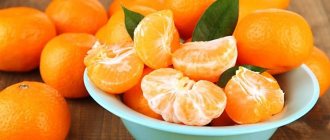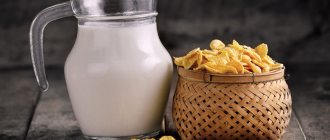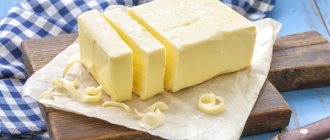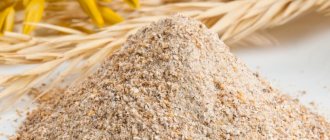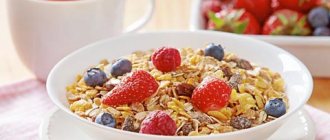Mustard is an annual plant belonging to the cruciferous family. The most sought after part of the herb is the seeds, which are widely used for culinary purposes. Thus, table mustard is prepared from low-fat grain cake, and the seasoning of the same name is obtained from ground raw materials. In addition, young leaves of the plant are added to salads or used as an appetizer for meat and fish side dishes.
In terms of taste and medicinal properties, mustard oil is superior to olive oil. Its chemical composition is represented by volatile esters, healthy omega fats, vitamins A, B, C, K and minerals. The product enhances the secretion of gastric juice, promotes expectoration of sputum in respiratory diseases, increases libido, suppresses pathogenic flora, and accelerates tissue regeneration. In addition, glycosidic structures were found in mustard seeds, thanks to which the plant has a pronounced blood-stimulating effect.
Botanical description and species
Mustard is an annual cold-resistant plant reaching 25-90 cm in height. The stem is erect, stiff-haired, with a small number of branches. The leaves are alternate pinnately incised with jagged edges. As they “climb” along the stem, the plates become smaller and the petiole shortens. The flowers are golden-yellow in color, collected in large umbellate-corymbose racemes of 25-100 buds.
The fruit is a tuberous thin pod filled with small round seeds. The flowering period of the crop occurs in May, and fruiting in June. The plant is not picky about growing conditions and grows well in almost all types of soil (except sandstone). During the growth process, the roots of cruciferous plants release substances into the soil that have a powerful phytosanitary effect. Thus, mustard is an excellent precursor for cereals and grain crops. The plant clears the field early. Interestingly, plowing mustard in late autumn contributes to the death of wireworms (a common pest).
The birthplace of culture is the Mediterranean, from where it spread to almost all continents.
Popular representatives of the species:
- White mustard (English). It has a mild taste (not spicy) and a subtle sweetish smell. White mustard seeds are used to make spice powder and edible oil. This product goes well with garlic, cinnamon, allspice, coriander, honey and olives.
- Black mustard (French). The seeds of the plant are colored red-brown and have a distinct pungent taste. Black mustard is used both in cooking (for making sauces) and in pharmaceuticals (for creating plasters and herbal medicines). In addition, the seed cake of this crop is used in agriculture as green manure (green manure).
- Sarepta mustard (Russian). The most pungent and oily variety of the plant, 100 g of seeds contains up to 49% healthy fat. Table mustard is made from grains of the Sarep variety, and powder for mustard plasters is obtained from the cake.
- Field mustard. A noxious weed that serves as a “reservoir” for insect pests. Despite the fact that field mustard cannot be eaten, it can be used to feed farm animals.
In addition, there is an Abyssinian variety, which is used to create crambe oil used in cosmetology.
Benefit or harm
Mustard is one of the healthiest spices that has antibacterial, warming, anti-inflammatory, tonic and expectorant effects on the human body. Considering that the product accelerates the transformation of fats, it is widely used in weight loss programs. In addition, mustard has now gained fame as a mild laxative, choleretic and antioxidant agent.
Medicinal properties:
- Stimulates appetite, accelerates metabolism, increases saliva production.
- Liquefies mucus and promotes expectoration.
- It has a warming effect (when used externally), relieves muscle pain, and accelerates wound healing.
- Increases cerebral blood circulation, thereby improving cognitive functions of the brain.
- Increases sexual desire (libido).
- Neutralizes the effects of free radicals, slows down the aging process.
- Stimulates the secretion of digestive glands, improves the absorption of fatty and protein foods, and eliminates flatulence.
- Suppresses pathogenic flora, neutralizes the effects of toxins and waste.
- Reduces the frequency of asthmatic attacks, reduces the intensity of manifestations of rheumatoid arthritis, relieves pain in the joints.
- Stimulates the regeneration of tissues and cells, helps strengthen the vocal cords.
Despite the usefulness of the product, if used carelessly and uncontrolled, it can be harmful to health.
Mustard is contraindicated for:
- increased stomach acidity;
- pulmonary tuberculosis;
- kidney pathologies (especially with nephritis and pyelonephritis);
- gastritis, enterocolitis, ulcers;
- varicose veins (for external use);
- food allergies;
- individual intolerance;
- childhood (up to 3 years).
In addition, you should not eat the seasoning at night, as its pungent taste irritates the receptors, which may result in problems falling asleep.
Remember, abuse of mustard can lead to shortness of breath, bradycardia, inflammation of the gastric mucosa, and exacerbation of ulcers.
Useful properties of mustard
The beneficial properties of mustard are largely due to the fact that this plant is rich in volatile essential oils. They act as a natural antiseptic, killing most of the known pathogens. A little essential oil on a handkerchief is a good precaution during flu epidemics. However, if you already feel unwell, traditional medicine recommends using the “heavy artillery” - make a foot bath, take half a kilo of mustard powder in 3 liters of water at least 40 degrees. Keep your feet in this mixture for 10-20 minutes and sprinkle some dry mustard powder in your socks at night. This measure can help you cope with a cold, even if you are already sick.
Everyone knows mustard plasters, but few people know that they can be used not only if you have a cold. The application of mustard plasters to painful cramped muscles and damaged joints gives a good pain-relieving effect. Just try not to use mustard plasters if the skin is mechanically damaged.
Mustard is also used in home cosmetics. For example, you can wash your hair with a mixture of 2 eggs with 1 tablespoon of mustard powder. This “shampoo” prevents hair loss and helps with oily seborrhea. In general, mustard powder is a good analogue of fat-dissolving chemical compounds. Therefore, they often wash greasy dishes with it, and also use a little powder if, for example, fatty milk has escaped and you urgently need to wash the stove.
Everyone knows the culinary uses of mustard. This spice is the hallmark of Russian cuisine. It not only adds spice, but also enriches the body with vitamins. Good natural mustard is a source of vitamins A, E, B1, B2, B3. It also contains some zinc and iron. Eating spices speeds up metabolism and can correct increased appetite due to tasteless and bland food. That is why mustard is often recommended for those who are losing weight and for everyone who wants to maintain their figure.
Chemical composition
Mustard is a low-calorie product, 100 g of which contains 70 kcal.
At the same time, the seeds of the culture are a natural source of vegetable and essential oils used both in cooking and in pharmacology. Table No. 1 “Nutritional value of mustard”
| Name | Concentration of the substance in 100 g of product, grams |
| Water | 82,65 |
| Squirrels | 4,37 |
| Fats | 4,01 |
| Ash | 3,64 |
| Alimentary fiber | 3,3 |
| Carbohydrates | 2,03 |
Table No. 2 “Chemical composition of mustard”
| Name | Concentration of nutrients per 100 g of product, milligrams |
| Vitamins | |
| Choline (B4) | 22,4 |
| Ascorbic acid (C) | 1,5 |
| Niacin (B3) | 0,52 |
| Alpha tocopherol (E) | 0,36 |
| Thiamine (B1) | 0,34 |
| Pantothenic acid (B5) | 0,3 |
| Pyridoxine (B6) | 0,06 |
| Riboflavin (B2) | 0,03 |
| Folic acid (B9) | 0,007 |
| Beta carotene (A) | 0,004 |
| Phylloquinone (K) | 0,002 |
| Macronutrients | |
| Sodium | 1135 |
| Potassium | 138 |
| Phosphorus | 106 |
| Calcium | 58 |
| Magnesium | 49 |
| Microelements | |
| Iron | 1,51 |
| Zinc | 0,64 |
| Manganese | 0,42 |
| Copper | 0,09 |
| Selenium | 0,033 |
| Fluorine | 0,001 |
Table No. 3 “Amino acid composition of mustard”
| Name | Protein content per 100 g of product, grams |
| Glutamic acid | 0,75 |
| Aspartic acid | 0,4 |
| Proline | 0,37 |
| Leucine | 0,3 |
| Lysine | 0,27 |
| Arginine | 0,26 |
| Glycine | 0,24 |
| Serin | 0,21 |
| Valin | 0,2 |
| Phenylalanine | 0,17 |
| Threonine | 0,17 |
| Isoleucine | 0,15 |
| Tyrosine | 0,14 |
| Histidine | 0,12 |
| Methionine | 0,08 |
| Tryptophan | 0,01 |
The composition of mustard seeds includes glycosides, enzymes, esters and organic acids, which have a powerful bactericidal and antioxidant effect on the body.
Application
Mustard seasoning will serve as an excellent addition to any meat dishes, enhancing the taste and adding piquancy. When fried, breaded meat in mustard will be softer, tasty and juicy, forming a beautiful crust.
Mustard oil never spoils; it is used in baking various types of baked goods, making canned food and pickling. Mustard is an integral component of mayonnaise, various ketchups, sauces and dressings.
With proper and moderate consumption of mustard, it will only bring benefits to the body.
Market Analytics
- COVID-19 is changing the rules of the game in the cosmetics market
- Beauty of the future: cosmetic innovations 2020
- New ingredients are the driving force of the cosmetics industry
Convenient search for beauty salons on our website
Beauty salons in Moscow Beauty salons in St. Petersburg Beauty salons in Ekaterinburg Beauty salons in Novosibirsk
Latest blog posts on our website
- Naturecream / Geranium (Pelargonium) oil for skin health and beauty
- Prostye-sovety / Save on a beauty salon: procedures that can be done at home
- Naturecream / Growth Factor - brings back youth?
- Oksana-Lezina / 3 effective abdominal exercises from a fitness instructor for beginners
- Prostye-sovety / Making perfect curls at home
- Prostye-sovety / Which hair removal method to choose
- Naturecream / Wrinkles Puppets
- Naturecream / PEPHA-TIGHT - instant skin lifting
- Naturecream / Blue light - a danger to the skin
- Naturecream / Cocoa Butter – A treat for the skin
Latest forum topics on our website
- Mrs._Smith / Badly sunburned! What to do?((
- Ice / Is it necessary to combine fitness classes with a diet?
- Antonova / What can be used for hair loss?
- Radio operatorKat / Who was on a protein diet?
- Suzanna / Mesotherapy on the face
Other articles in this section
| Adjika Adjika is a spicy Caucasian seasoning in the form of a paste containing garlic, salt, red pepper and various herbs. It is often red in color, but can be green when using unripe peppers. According to one version, the word “adzhika” is translated from Abkhazian as “red salt”, according to another – as “bread with salt”. |
| Jasmine Jasmine (Latin name: Jasmнnum) is a member of the olive family (Oleaceae). A close relative of lilac and ash. It is a low (no more than 2 m in height) evergreen shrub that sheds its leaves, growing in warm climates. In Russia, jasmine is found only in Crimea and the Caucasus. In the temperate zone, in dachas, it is not jasmine that grows at all, but mock orange from the hydrangea family, characterized by a richly sweet aroma of flowers. This feature is also characteristic of jasmine. Its flowers differ from lilacs in having 5 petals and they bloom at night. It is during this period or early in the morning that they are collected. |
| Zira Zira - seeds of the herb cumin, which belongs to the parsley family, is sold in the form of oblong-shaped grains. In many countries it is usually called by its Latin name; in our country it is called the same as in the East. This seasoning has been known since ancient times, but has gained great popularity in oriental cuisine for medicine. The history of the use of cumin goes back many centuries. It is often confused with caraway seeds, which are similar in appearance to cumin grains. Due to its specific taste, it is often used as a seasoning for bread and meat dishes. |
| Fresh mint Mint is a perennial aromatic plant of the Lamiaceae family. The scientific classification includes 25 species of mint and about 10 natural hybrids. All of them contain a large amount of menthol, but differ in the chemical composition of volatile substances and essential oils, and also have different odors. Some types of mint are cultivated as a medicinal and essential oil plant in many countries. Wild mint prefers moist soils and grows almost everywhere throughout Europe. |
| Coriander Coriander is an annual herbaceous plant belonging to the Apiaceae family. Even the ancient Greeks treated it with great respect and considered it a medical remedy. Later, thanks to the Romans, coriander was discovered in England and Western Europe. Then he ended up in America and then in India. |
| Baking soda Baking soda (or otherwise scientifically known as sodium bicarbonate), whose chemical formula is NaHCO3, is a non-toxic crystalline substance, most often sold as a fine, odorless, salty powder (lye). As a result of chemical reactions, sodium carbonate salt precipitates, water is separated and carbon dioxide is released. The reaction is weak, therefore absolutely safe for humans, animals and plants. |
| Apple cider vinegar 3% Apple cider vinegar is vinegar obtained by fermenting raw materials from apples. Moreover, it has a richer taste than alcohol. Apple cider vinegar is mild in taste and aromatic. |
| Mayonnaise Provence Mayonnaise was first prepared in France, in a city called Mayon - hence the name of modern mayonnaise. The date of production of the first mayonnaise according to the classic recipe dates back to the 18th century. The ancestor of mayonnaise was a sauce that was prepared in Spain from eggs, olive oil and garlic. |
| Ginger Ginger is an exotic perennial plant native to tropical and subtropical climates. The countries of Southeast Asia are considered to be its historical homeland. Currently, industrial plantations of cultivated ginger are located in China, India, Indonesia, Australia and some West African countries. A rare type of ginger is grown in Jamaica, which has a unique delicate aroma. |
| Cloves Cloves are a spice that consists of the dried, unopened buds of the clove tree. This plant grows only in warm countries with a humid, maritime climate. The cultivation of clove trees is widespread in Indonesia, Malaysia, Tanzania, Grenada and Madagascar. |
Application in cosmetology
Considering that mustard is a symbiosis of biologically active substances, the product has long been used for cosmetic purposes to maintain beauty. For the first time, oriental beauties began to use the seasoning, and European women followed them. Mustard is indicated for the care of oily, sagging and problematic skin.
Effects of using the seasoning:
- Activates metabolic processes in the dermis, restores cellular balance.
- Improves skin tone, evens out its relief, eliminates “traces” of acne.
- Normalizes the functioning of the sebaceous glands, cleanses pores.
- Lightens age spots and freckles.
- Reduces the severity of inflammatory processes, dries out acne and pimples.
- Smoothes out fine wrinkles, improves skin turgor.
- Stimulates the production of collagen and elastin.
- Improves blood flow to the dermis, tones the stratum corneum, activates hair growth, strengthens the cuticle.
- Nourishes and moisturizes the dermis.
Remember, mustard is an aggressive seasoning that can easily burn dry, irritated dermis. In view of this, it is recommended that those with dehydrated skin perform masks based on it exclusively through thin flannel fabric, avoiding contact with the mucous membranes and sensitive integuments of the body.
With a combined type of dermis, mustard cosmetics are applied to the face after pre-moisturizing it with olive oil.
Helpful Tips:
- To prepare homemade masks, you should use only dry mustard powder (ground with your own hands).
- The maximum duration of exposure of mustard products on the skin is 10 minutes.
- It is better to apply mustard masks in the evening (2 hours before bedtime), since after the procedure the dermis will be red for some time.
- Considering that the seasoning dries out the skin, owners of oily hair should not use mustard masks more than 5 times a month. For dry dermis, it is better to limit yourself to 3 procedures. After 6 months, the course of treatment is repeated.
- To enhance the cosmetic effect, after the mustard “care,” a nourishing mask is applied to the face.
- To reduce the aggressive effect of the seasoning on the scalp, mustard products are applied to it 3 days after washing the hair.
Remember, masks with hot seasoning are contraindicated for rosacea, hypertension, vascular obstruction in the cervical spine, damage to the stratum corneum, hypertrichosis (excessive hair growth), rosacea, herpes, and atopic dermatitis.
Before using the products, you should first test your skin for allergies. To do this, the spicy mass is applied to the inner elbow and the reaction of the dermis is observed. The appearance of severe burning or redness is the first reason why you should stop using mustard-based beauty recipes. If the body does not react to the composition, the seasoning can be added to the masks.
Homemade beauty recipes
- Mask for problematic acne skin. Ingredients: 30 ml water, 20 g turmeric, 15 g mustard powder, 2 drops lemon juice. Combine the indicated components, and then apply the mixture to the affected area (pointwise). After 10 minutes, rinse your face with warm water.
The composition has a powerful anti-inflammatory, bactericidal and cleansing effect.
- Whitening face mask. Preparation principle: pour 15 g of mustard powder into 30 ml of purified water. Simmer the mixture for 10 minutes in a water bath. After cooling, add 25 ml of natural honey, 15 ml of lemon juice and 0.3 ml of almond oil to the solution.
The product is used to even out skin tone, soften the dermis, remove freckles and age spots.
- Mask for mature skin. Mix 25 ml of sour cream (thermostatic), 20 g of finely chopped parsley, 15 g of mustard (chopped). Apply the composition to cleansed epidermis after the makeup removal procedure.
The composition perfectly tones the skin, smoothes out fine wrinkles, improves complexion, and accelerates regeneration.
- Cleansing mask for any type of dermis. The composition is prepared on the basis of mustard and oatmeal. To do this, these components are mixed in equal proportions (15 g each), and then 30 ml of hot water (90 degrees) is poured. After cooling, the mixture is combined with cream (15 ml) and lemon juice (0.3 ml).
The mask is used to even out skin tone, cleanse surface pores, and smooth out fine wrinkles.
- Cellulite wraps. To combat orange peel, combine 45 ml of linden honey and 30 g of crushed mustard. The mixture is rubbed into problem areas with massaging movements, and then the body is wrapped in cling film. After 50 minutes, wash off the mask with hot and then cold water. The frequency of the procedure is 2 times a week.
The composition actively nourishes the dermis, activates the breakdown of adipose tissue, and accelerates tissue energy exchange.
- Mask to stimulate hair growth. Active ingredients: 30 g mustard powder, 30 ml nettle decoction, 15 ml cognac, 15 ml fatty almond oil. Rub the prepared mixture into the root zone of the hair. The holding time of the composition is 10 minutes.
With regular use of mustard “cosmetics”, not only the appearance of the skin improves, but also the aging process slows down. When working with hot seasoning, follow safety rules: do not apply the composition to skin with damage (cuts, scratches), avoid the area around the eyes.
Use in folk medicine
Considering that mustard is rich in essential oil, it is often used for wraps, baths and warming procedures. When used externally, the seasoning helps to resolve inflammation, dilate blood vessels, and reduce pain.
Traditional recipes:
- Foot baths for colds. Dissolve 60 g of mustard powder in 6 liters of hot liquid, and then dip your feet in the “stinging” solution. After 15 minutes, dry your feet and put on wool socks. This procedure should be carried out immediately after the first signs of the disease appear: discomfort in the throat, muscle aches, nasal congestion. Along with this, foot baths are effective for bronchitis, joint pain and a sharp increase in blood pressure.
If you have varicose veins, it is better to avoid the procedure.
- Mouth rinse. To prepare an antiseptic solution you will need: dry mustard (10 g), sea salt (10 g), lemon juice (5 ml), honey (5 ml). These components are poured with boiling water (250 ml), and then left for a quarter of an hour in a thermos. The product is indicated for irrigation of the oral cavity for colds, sore throat and pharyngitis.
- Phytocomposition for the treatment of articular rheumatism. Ingredients: 90 ml medical alcohol (70%), 50 g mustard powder, 40 ml camphor oil (10%), egg white. After mixing, move the raw materials to a cold place for 2 days. The resulting mixture is applied to a piece of gauze (folded in 3 layers), and then applied to the affected area. Cover the top of the compress with cellophane and cotton cloth, secure with a bandage, and leave for 2 hours.
To relieve joint pain, the procedure is performed for 60 days (preferably before bedtime).
- Warming bath for neuralgia. To reduce pain in the area of nerve innervation, you will need to prepare a medicinal mixture from mustard powder. To do this, 200 g of crushed raw materials are poured into 300 ml of boiling water, stirred thoroughly, and then added to a bath filled with water. The optimal temperature of the liquid is 37-38 degrees, the duration of immersion in water is 10 minutes.
After taking a therapeutic bath, the body is washed with warm water and then put to bed for 1.5 hours. This procedure can be used for bronchitis, pneumonia, acute respiratory diseases, as well as after prolonged exposure to cold (as a cold prevention).
- Express remedy for migraines. Dissolve 150 g of freshly ground mustard powder in 2 liters of hot water. Cool the liquid to 38 degrees. For migraines, place both hands in a warm solution for 10 minutes. The headache should calm down.
Remember, procedures using mustard can be carried out only on intact areas of the skin, where there are no abrasions, scratches, rashes or irritations.
Housekeeping assistant
Mustard is one of the few seasonings used not only in cooking and pharmacology, but also in everyday life.
Household use:
- Dishwashing liquid. Mustard, due to its allylic oil content, perfectly removes grease from kitchen utensils. To wash off dirt, dishes are soaked in hot powder (diluted with water) for 5-10 minutes, after which they are washed under running water.
- Neutralizer of unpleasant odors. In order to eliminate unwanted aroma ingrained in plastic dishes or other kitchen utensils, pour 10 g of crushed mustard into it. After this, add 150 ml of liquid into the container and shake vigorously. After 5 minutes, the dishes are washed with hot water.
Along with this, mustard can be used to eliminate unpleasant odors inside chests of drawers, sideboards and wardrobes. To do this, the powder is placed in small fabric bags and then laid out in the niche of cabinets and cabinet furniture.
- Stain remover. Mustard does an excellent job of removing old stains and unwanted odors on woolen fabrics. It is advisable to use the hot seasoning instead of powder for soaking (200 g of dry mixture per 10 liters of water) and automatic washing (50-100 g of mustard per machine).
The optimal duration of soaking laundry in mustard liquid is 3 hours. After washing, woolen items must be rinsed in water to which ammonia is added.
- Preservative. Mustard will help preserve meat without refrigeration, as it prevents rotting processes. To extend the shelf life of raw materials, they are thickly coated with natural hot seasoning.
- Insecticide for garden pests. Mustard powder is used to combat fleas, caterpillars, aphids, moths, thrips and slugs. For spraying fruit crops, prepare a solution based on the calculation of 100 g of seasoning per 10 liters of water. The duration of infusion of the liquid is 1.5 days. Before irrigation, add laundry soap (one-third of a bar) to the mixture.
In addition, mustard is an excellent green manure used as a green fertilizer to enrich the soil with nutrients and inhibit the growth of weeds.
Contraindications and possible harm of mustard
Excessive consumption can cause irritation of the gastrointestinal mucosa, burns of the esophagus or oral cavity, and indigestion. Highly not recommended for use:
- for gastritis, ulcers, and other stomach diseases;
- jade;
- enterocolitis;
- individual intolerance, allergies;
- diseases of the colon.
You should be careful with the amount of seasoning you consume. You can eat it every day, but 10–20 grams (5–8 grams in 1 teaspoon) with your favorite dish. You can eat mustard even on a diet, because it is considered a low-calorie product. If unpleasant symptoms occur in the form of skin rashes or swelling, you should stop using the spice and consult a doctor.
Is it possible for pregnant and lactating women to have mustard?
It’s not news that pregnant women often have rather strange desires for combining different foods in their diet. During this period, many people note an increased craving for seasoning.
For women in this position, the benefits and possible harm are just as relevant as for others. Moderate consumption will have a positive effect on the body. Mustard will help relieve toxicosis and improve appetite.
When breastfeeding, it is better to avoid seasoning until the child is about six months old. Otherwise, the spice may harm the baby’s health. After this, the spice should be introduced into the diet gradually, starting with small portions.
Can children have mustard?
The seasoning has a rather pungent, specific taste and a warming effect. Therefore, it should not be given to children under three years of age; it can cause a burn to the esophagus, problems with the stomach and intestines.
At older ages, mustard is used to prevent and treat childhood colds and infectious diseases by adding mustard to socks or making foot baths.
But remember that mustard plasters are strictly contraindicated for children under 6 years of age. Before use, it is better to ask your pediatrician for advice.
To watch a video about the beneficial properties of the plant and its contraindications:
Criterias of choice
When purchasing a seasoning, first of all, pay attention to its ingredient composition. High-quality mustard includes only natural ingredients. Namely, grains (not powder), alcohol or apple cider vinegar (instead of vinegar essence). In addition, the spicy mixture may include cloves, bay leaves, nutmeg, garlic, horseradish, salt and sugar. If the product contains essential oil, starch or additives with the abbreviation “E”, the manufacturer used low-quality raw materials. The exceptions are citric acid (E330) and curcumin (E100).
Criterias of choice:
- Consistency and color. Ready-made high-quality mustard has a uniform structure and a yellow tint (sometimes light brown). The gray color of the seasoning indicates the presence of low-quality mustard powder in it. In addition, the consistency of the natural sauce is homogeneous without visible separations or lumps.
- Shape and structure of whole seeds. High-quality mustard grains are usually the same size without crevices or dark spots. The presence of defects in raw materials indicates improper storage or pest infestation.
If dust falls out when you grind the seeds, their shelf life has long expired.
- Package. It is better to purchase liquid mustard in a transparent glass container in order to visually assess the quality of the product. If oil drops, bubbles, separations or a dark dry crust are visible on its surface, the product is spoiled.
- Manufacturer country. When choosing mustard, it is important to pay attention to the harvest region, as its spiciness and taste depend on this. Thus, Polish and Russian seasonings are recognized as the hottest sauces, while American and European ones are considered “softer”.
- Aroma and taste. High-quality mustard seeds have a subtle pungent odor, which manifests itself mainly when chewed. Moreover, yellow varieties are characterized by a sweetish taste with a slight bitterness, while brown varieties have an acrid, “burning” taste in the mouth.
The shelf life of natural mustard is 45 days (at a temperature of 5-10 degrees). If the shelf life of the product (indicated on the packaging) exceeds this limit, preservatives are added to the raw materials.
Vitamins and minerals
| Vitamin name | Quantity per 100 grams | % Daily Value | ||
| Mustard seed | Mustard powder | Mustard seed | Mustard powder | |
| Vitamin PP (Niacin equivalent), mg | 4,28 | 6,4 | 21,4 | 32 |
| Vitamin B1 (Thiamin), mg | 0 | 0,3 | 0 | 20 |
| Vitamin B2 (Riboflavin), mg | 0 | 0,7 | 0 | 38,9 |
| Beta-carotene, mg | 0 | 0,03 | 0 | 0,6 |
| Vitamin E (Tocopherol), mg | 0 | 4,2 | 0 | 28 |
| Vitamin A (Retinol equivalent), mcg | 0 | 5 | 0 | 0,6 |
In addition to the abundance of vitamins, mustard contains minerals that are valuable for health:
| Name of mineral | Quantity per 100 grams | % Daily Value | ||
| Mustard seed | Mustard powder | Mustard seed | Mustard powder | |
| Iron, mg | 25 | 40 | 139 | 222 |
| Calcium, mg | 254 | 365 | 25,4 | 36,5 |
| Potassium, mg | 608 | 828 | 24,3 | 33,1 |
| Sodium, mg | 37 | 67 | 2,8 | 5,2 |
| Magnesium, mg | 258 | 453 | 59,5 | 113 |
| Phosphorus, mg | 650 | 797 | 81,3 | 99,6 |
Mustard can become an indispensable seasoning on the table and an important assistant on the path to longevity and health of the body. It is enough to introduce this seasoning into your menu in moderate doses from time to time. A positive result will not be long in coming.
Use in cooking
Mustard is a spicy seasoning that enhances the taste of fish, meat, mushrooms and vegetables. In addition, thanks to its antibacterial properties and the “ability” to convert emulsion into fats, the product is used to create a variety of sauces and increase the shelf life of perishable food (as a preservative).
How to make homemade mustard
To obtain the sauce, it is better to use fresh whole grains, which are ground immediately before creating the dish. After grinding, the mustard flour is sifted through a fine sieve. This procedure is performed to prevent large shell particles and foreign impurities from getting into the finished mixture.
Homemade mustard (Dijon)
Ingredients:
- dry wine – 180 g;
- mustard powder (from black seeds) – 55 g;
- onions – 1 piece;
- liquid honey – 40 g;
- vegetable oil (preferably olive) – 35 g;
- garlic – 20 g (2 cloves);
- Tabasco sauce – 15 g;
- tomato paste – 10 g;
- sea salt – 5 g.
Cooking principle:
- Chop the onion into large slices and place in a small saucepan.
- Pour dry wine over the onions and put on fire. After boiling, turn down the heat and boil the raw material for 5 minutes.
- Strain the hot wine broth through a colander, combine with sea salt and mustard powder. Mix the composition thoroughly.
- Add vegetable oil, Tabasco sauce and liquid honey to the cooled dressing.
- Boil the mustard mixture over low heat until a homogeneous thick mass is obtained (3-5 minutes).
- Place the dressing in a cool place until it thickens completely.
Dijon mustard goes harmoniously with vegetable appetizers, meat side dishes, sausages and red fish.
Whole Grain Mustard Recipe
Ingredients:
- apple or wine vinegar – 100 ml;
- whole mustard seeds (black and yellow) – 100 g;
- light beer – 50 ml;
- honey - to taste.
Cooking method:
- Pour apple cider vinegar over mustard seeds.
- Add light beer to the hot mixture, mix thoroughly, cover with cling film.
- Leave the mustard dressing in a warm place for 9 hours.
- Add honey or sugar to the swollen grains.
- Grind the resulting mixture using a blender.
If the sauce is too thick, you can add 20-50 ml of water while whipping.
- Transfer the prepared mustard into a glass container and then put it in the refrigerator.
Best materials of the month
- Why you can't go on a diet on your own
- 21 tips on how to avoid buying stale food
- How to keep vegetables and fruits fresh: simple tricks
- How to curb your sweet cravings: 7 unexpected products
- Scientists say youth can be extended
The shelf life of homemade dressing is one month.
Conclusion
Mustard is one of the most popular seasonings in cooking, used as a side dish for meat, fish and vegetable dishes. In addition, it is used as a natural emulsifier for the preparation of marinades, dressings and sauces. Considering that mustard is a natural source of volatile esters, glycosides and organic acids, it is successfully used for pharmacological purposes. The product improves metabolism, stimulates digestion, accelerates tissue regeneration, suppresses pathogenic flora, improves the absorption of fatty foods, and promotes sputum discharge. Along with this, mustard is used in cosmetology to care for oily, acne-prone and problematic facial skin.
Remember, mustard is an aggressive spice containing erucic acid, which is not broken down in the body. In view of this, the product (especially unrefined oil) should be consumed with caution, no more than 30 g per day, since its accumulation in the body can cause inflammation in the heart muscle.
More fresh and relevant information about health on our Telegram channel. Subscribe: https://t.me/foodandhealthru
We will be grateful if you use the buttons:
Used in recipes:
No recipes were found based on these criteria...
| Navigation: All recipes |
- Borders and neighboring countries The greater the number of questions, the stronger your knowledge of geography and countries of the world will be!
- Test: Continents The greater the number of questions, the higher the accuracy of the test result!
- Country Flags Test The greater the number of questions, the higher the accuracy of the test result!
- Psychic Test The test will last about 5 minutes and will contain 50 attempts
- Mega IQ test The average IQ of university graduates is 115, excellent students - 135-140. And what about you?
- Human Visual Memory Test Our test will assess your level of visual memory. Try to concentrate and not get distracted.
- Test on traffic rules The database contains 285 road signs of the Russian Federation approved by the rules of the road (SDA)
- Test on geography and countries of the world The database contains detailed information about 199 countries of the world
- Determine your intelligence When taking the test, you cannot use paper, a calculator, a pen, a cheat sheet, the Internet, or tips from a friend.


Free games online · Eng · CZ Hry · Games online for free · Icon on your Web · Visitors' book · RoboStav Copyright (c) 2020 by Topglobus.ru. All rights reserved!
